In 1893, the country of Denmark enacted a law that standardized a new system of silver marking. Required were: Maker's Mark, Numerical Standard Mark, Assay Mark (three tower), and Assay Master's Initial Mark. The minimum standard of silver purity was .826, in 1936 this minimum was amended to .830 and .925 (sterling) became the other official standard - although the sterling standard had been commonly used before, especially on silver made for export.
If one examines the marks on many pieces of 20th century Danish silver, it becomes apparent that adherence to the marking law was either at the discretion of the maker or very lax in enforcement. Many of the larger firms, such as George Jensen, Hans Hansen & Carl Cohr, rarely had official assay marks on their silverware and jewelry, no doubt these names inspired trust and their customer base did not require the added credence of state control marks. However, smaller firms and individual silversmiths did tend to follow the law, as official state marking did inspire confidence in their customers.
As the 20th century progressed, the official state hallmarks are found less and less, they were officially retired in 1977, by which time it had already become common practice for pieces to be marked only with the maker's intials, 925S and sometimes "Sterling" and "Denmark" or "Danmark".
Below are twelve examples of Danish silver illustrating the common variations of marking through the century, they are in sequential order from 1893 to c.1975.
|
• • •
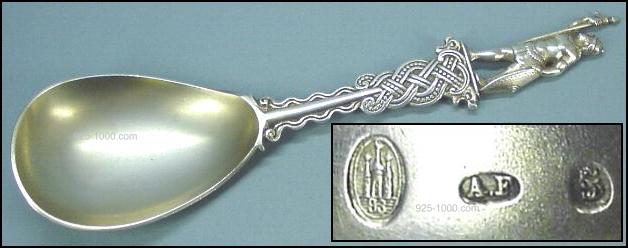 |
| A souvenir spoon by A. Fleron, Copenhagen 1893, the assayer's mark SG for Simon Groth. No numerical standard mark, the "three tower" mark guaranteed it to be a minimum of .826 silver.
|
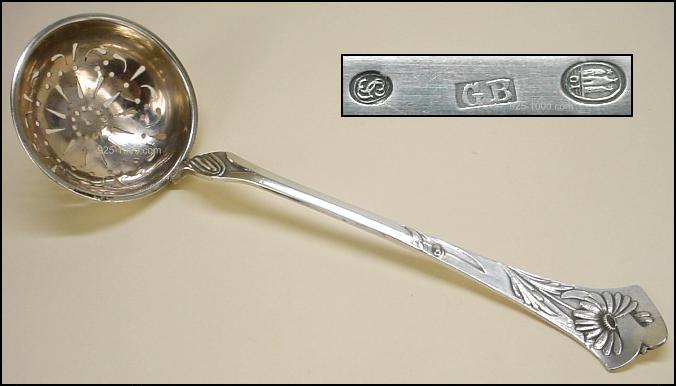 |
| An Art Nouveau pierced ladle by G. Binau, Copenhagen 1901, the assayer's mark of Simon Groth. No numerical standard mark, the "three tower" mark guaranteed it to be a minimum of .826 silver.
|
 |
| Gilt sterling and enamel sugar tongs by Peter Herz, Copenhagen. Marked only with maker's mark and 925S. These could have been made any time from c.1895 until the 1930s, Herz was a crown jeweler, the name was enough to guarantee confidence. Probably made for export.
|
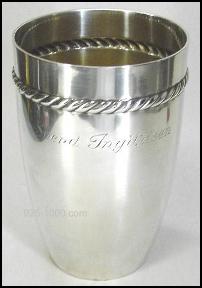   |
| An Arts & Crafts beaker, unknown maker & location, year 1915 with the assayer's mark CFH for Christian F. Heise. The "D Hammer A" mark in the shield shaped cartouche is for the Dansk Arbedje, a Danish trade association that promoted Danish consumerism of Danish products, it is not a maker's mark. No numerical standard mark, the "three tower" mark guaranteed it to be a minimum of .826 silver.
|
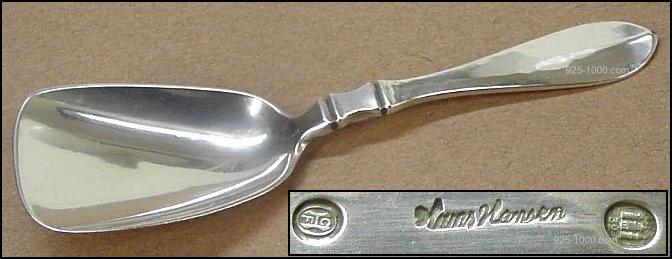 |
| A silver sugar spoon by Hans Hansen of Kolding, year 1932, stamped with the assayer's mark of Christian F. Heise. No numerical standard mark.
|
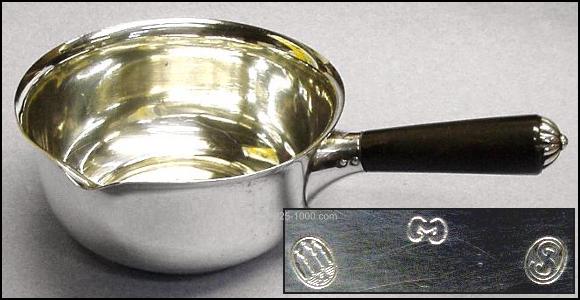 |
| A silver and ebony saucepot by Carl M. Cohr of Fredericia, 1934 with the assayer's mark JS for Johannes Siggaard. No numerical standard mark.
|
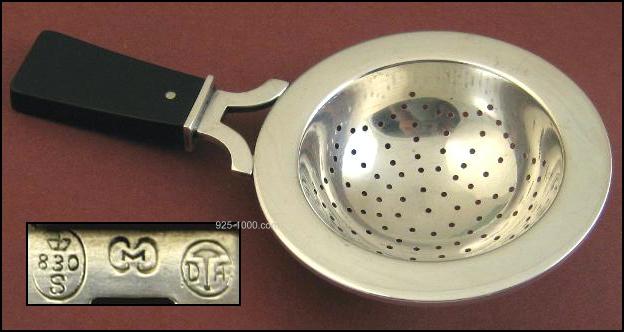 |
| A silver and bakelite tea strainer by Carl M. Cohr of Fredericia, c.1936. It also carries the Dansk Arbedje mark as well as .830S for the silver standard.
|
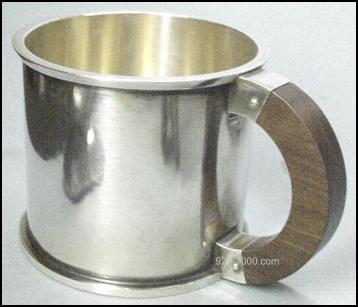   |
| A sterling & rosewood mug by Hans Hansen of Kolding, "in house" year mark for 1949. Marked - Sterling & Denmark.
|
 |
| Sterling "Sparta" pattern napkin rings by Carl M. Cohr of Fredericia, c.1950s. Marked - Sterling & Denmark.
|
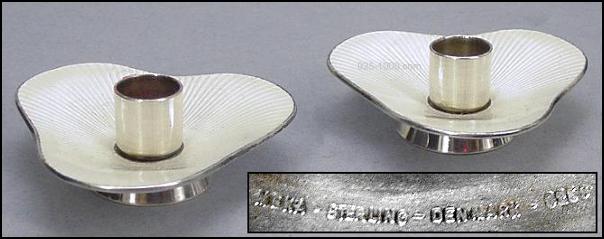 |
| Sterling & enamel tapersticks by Meka of Holte, c.1960. Marked - Meka, Sterling, Denmark 925S.
|
 |
| Sterling & nephrite brooch by Niels Erik From of Nakskov, c.1970. Marked - N. E. From, Sterling 925S, Danmark.
|
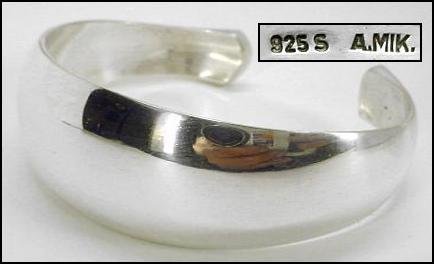 |
| Sterling cuff bracelet by Andreas Mikkelsen, Copenhagen c.1975. Marked - A. Mik 925S.
|
• • •
• • •
Looking to do further research? Have a mark you can't identify? Join the forum.

|
© 2000 - 2018
925-1000.com
all rights reserved
|
|